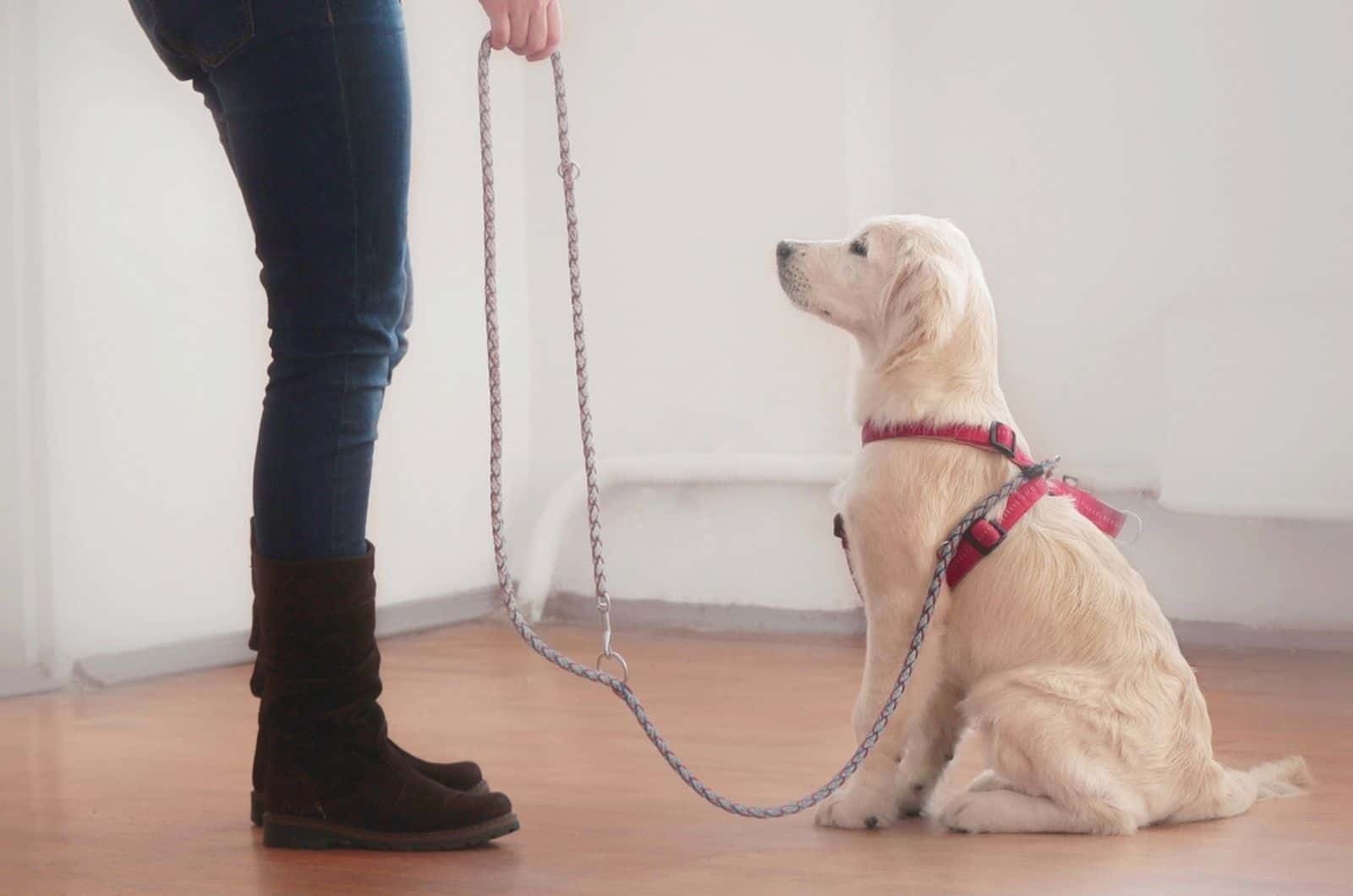Last year, my friend decided to become a dog owner (finally), and I wholeheartedly offered to help him with anything he needed, especially because he got one of my favorite breeds, a German Shepherd.
I consider GSDs to be great dogs for first-time owners because they’re obedient and easy to train. However, neither of us expected his doggie, Jinx, to be quite stubborn.
Everything was going quite well, but when it came to leash training, Eric (my friend) couldn’t handle it on his own.
After his cry for help, I decided to put in use all my knowledge and researching skills and prove that this doggie was not a jinx, after all.
#1 It’s All About Positive Energy
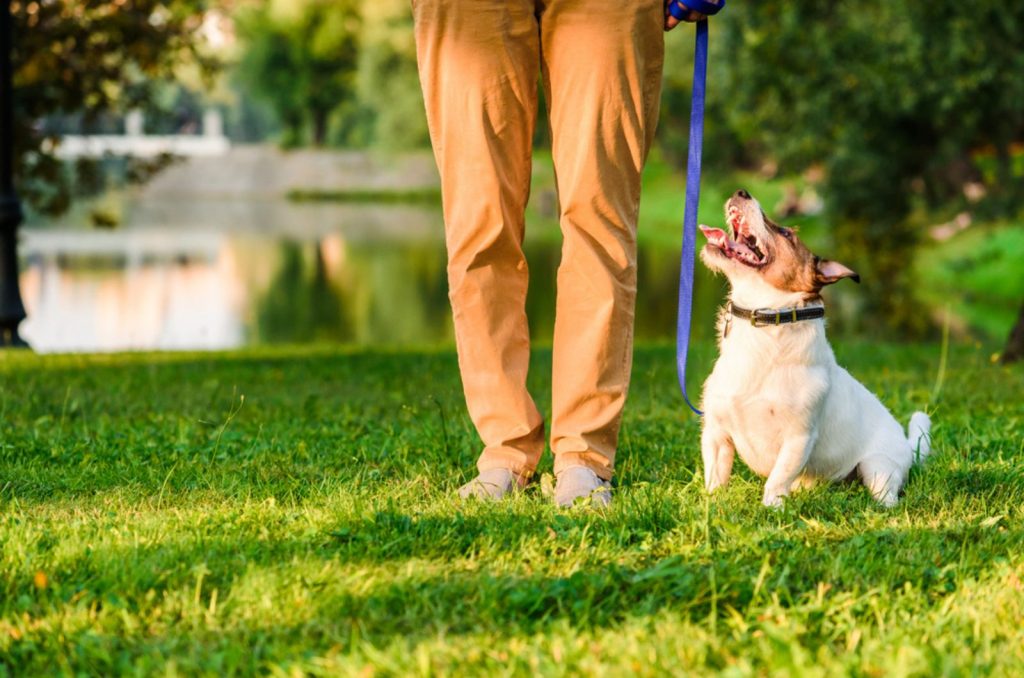
The first thing I noticed when I got with Eric and Jinx was that they were both tense. Eric’s attitude was a recipe for disaster, as his failure built a great amount of negativity inside him, which reflected onto the dog.
Jinx was able to sense this negative energy, and it made him nervous and stressed as well.
Dogs can sense our emotions, be it through smell, our facial expressions, or the tone of our voice. [1]
This is one of the first things I learned about dogs, and I have to admit, one of the most important ones, especially when it comes to training.
Therefore, my mission was clear. Before leash training the puppy, I had to teach Eric how to remain calm and positive about the whole process.
As Cesar Millan puts it: “[…] The leash needs to represent something positive […] Your energy has to be positive.”
If the dog can’t feel positive energy from you, the leash will represent a burden for him.
Once Eric understood that his attitude towards leash training reflected on his GSD, and then started working his best to radiate positive energy and confidence, it was time to move on with leash training.
# 2 The Leash Is A Dog’s Best Friend
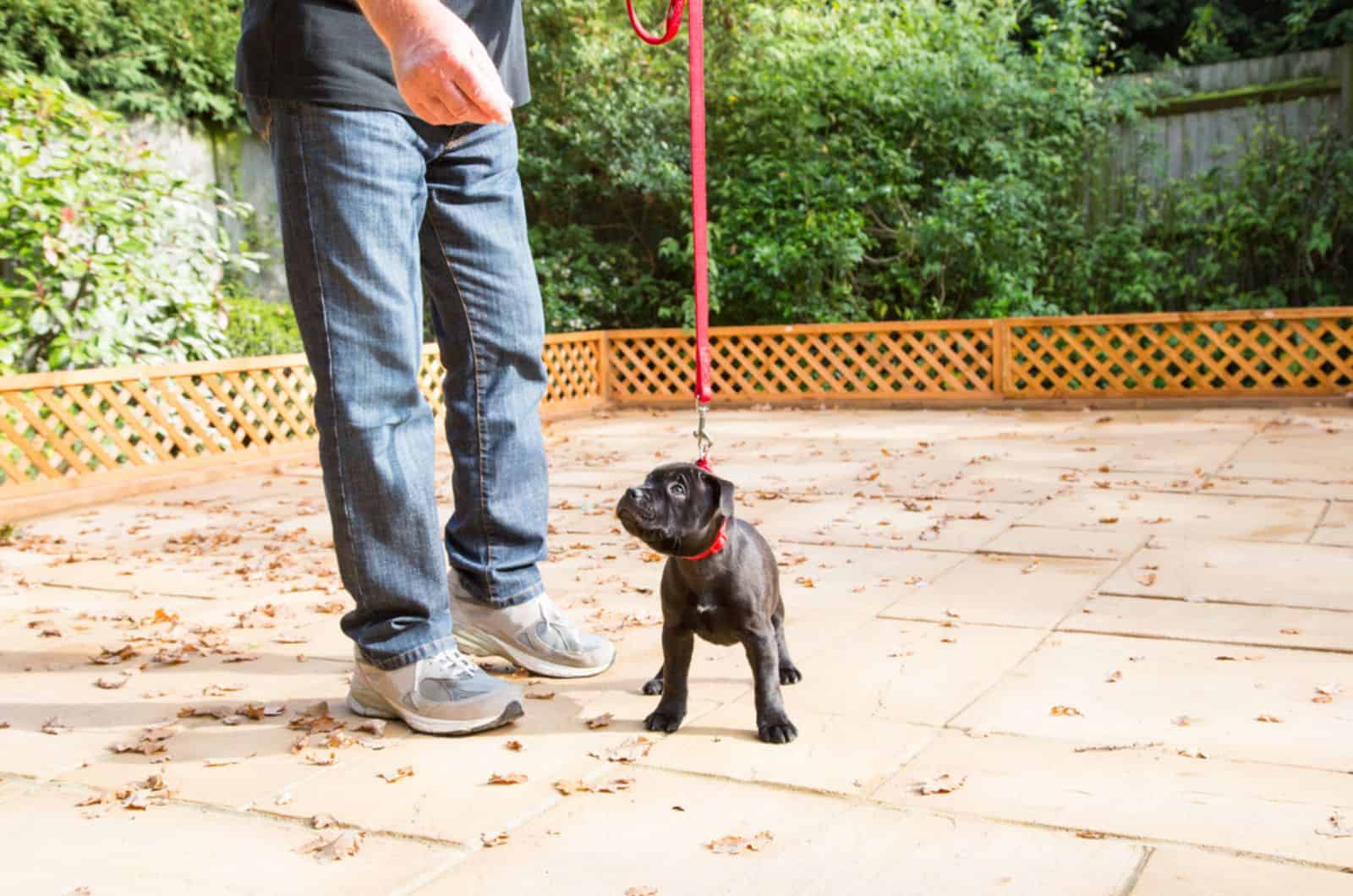
Jinx was not happy about the leash at all the second he saw it because he already connected it with something negative.
That’s why I am and always will be thankful to the person who invented dog treats – the solution to almost any training issue.
Treats are valuable rewards for pooches of any breed, which is why it’s essential to incorporate them into leash training. According to a study done by Erica Feuerbacher, and Clive Wynne, dog food represents better motivation than praise or physical touch. [2]
Once we included dog treats into the game, along with positive energy, Jinx wasn’t feeling so anxious about the leash.
Leash And Play
Led by personal experience, I advised Eric to start using the leash inside the house more often, just so Jinx could get used to it before going for walks.
It took some time until Jinx finally accepted his fate, but with his favorite treats and lots of patience from Eric’s side, he finally managed to be leashed without resistance.
After a few days of playing with it, Jinx didn’t actually mind the leash so much, and Eric was on cloud nine.
#3 Finding The Right Word
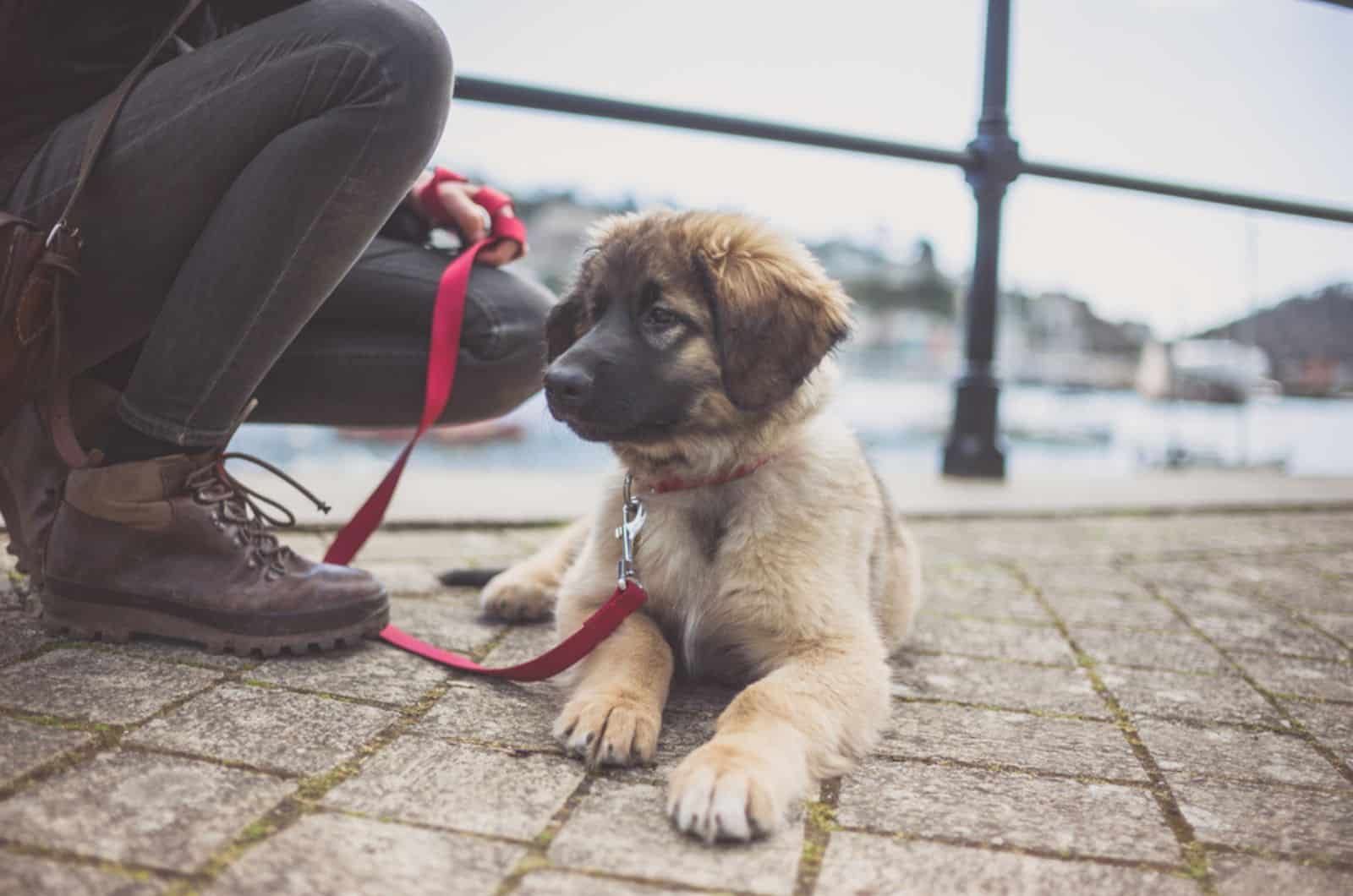
After Jinx got used to wearing a leash, it was time to teach him a command to get back to his owner while on the leash.
A simple sound or word will be enough to trigger the pooch to turn to his owner. Eric went with a tongue clucking sound and it worked like a charm.
This way, Eric would get Jinx’s attention every time, and reward him with a treat so he would be willing to repeat the action.
But, we didn’t stop there.
I advised Eric to step up the game and encourage Jinx to get back to him. However, the tongue signal wasn’t enough for the pup to start moving, so we incorporated another command right after the sound cue, “come”.
Of course, you don’t have to go with the same command… you can use anything that your pooch is already familiar with.
# 4 Time To Go Outside
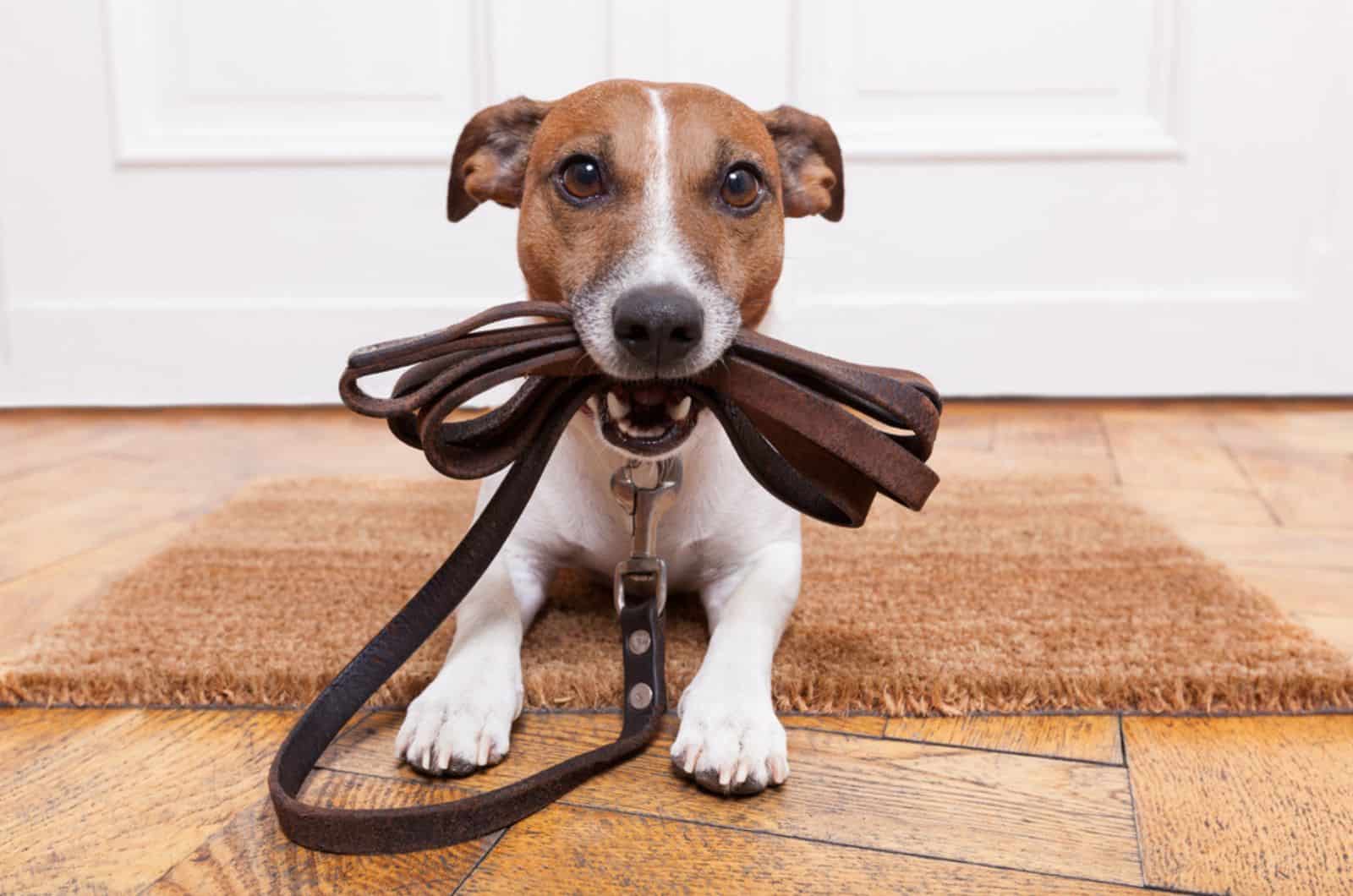
This was one of the most challenging parts, as there are plenty of distractions outside that can easily catch a dog’s attention and make him unresponsive to his owner’s commands.
However, I have to admit that Eric did an amazing job teaching his GSD basic commands, which is why Jinx was able to respond to Eric shortly after each order.
Still, it took some time until Eric was able to fully manage his doggie on a leash while outside mainly because Jinx wasn’t used to being restrained during walks.
Although such behavior can cause frustration in owners, I reminded my buddy constantly of the importance of staying calm and positive so the doggo can relax and let him be the leader.
RELATED: How To Show Dominance To A Dog? 17 Steps To An Alpha Leader
Tip Of The Day
Do not go out of the house without treats. Okay, you can get some for your doggie, too.
Jokes aside… the best way to keep your doggie calm during walks with a leash is to reward him when he behaves well.
If the pooch starts pulling the leash, barking, or lunging… instead of punishing your pup, you should distract him by changing the direction from the trigger, and using a learned command to get the dog back to you.
If your pooch reacts to your command, and shows obedience on such occasions, make sure to reward him. The reward will motivate your dog to continue with good behavior, and will decrease behavioral issues.
How Do You Keep The Dog On A Loose Leash?
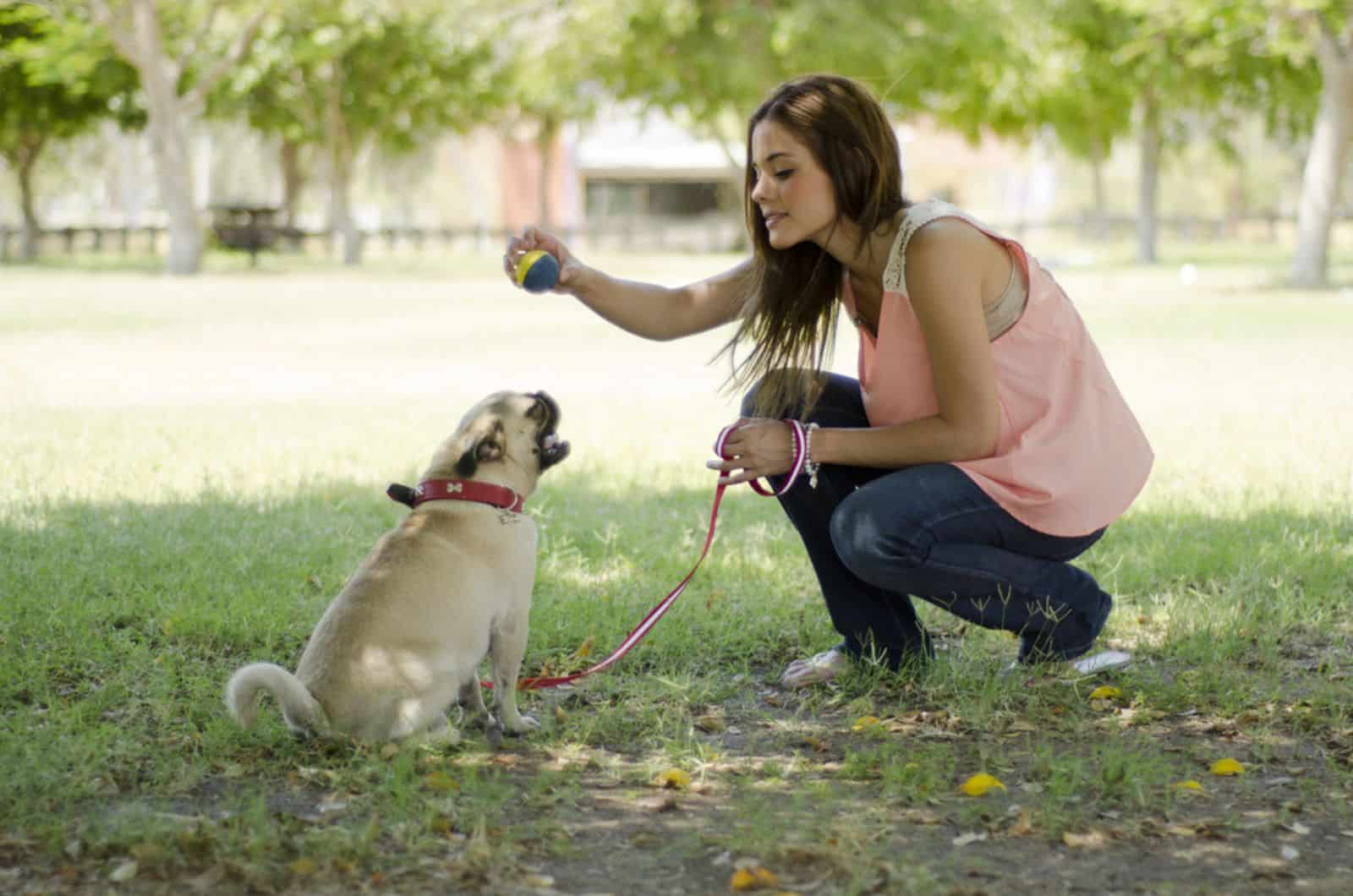
By incorporating all of the steps described above, Eric managed to leash train his German Shepherd, but the process was not over just yet.
The final step was to teach Jinx how to walk on a leash without pulling Eric’s arm all the time. As I mentioned in the “Tip Of The Day”, the best way to keep the canine calm and responsive to commands is by using rewards and positive reinforcement.
However, it’s crucial to learn the right time to offer treats to the dog. After doing some research on this topic, I came across a video that gave me great insight into reward-based leash training, which I later shared with Eric.
According to the dog trainer from the video, a dog shouldn’t be given a treat randomly, but only when it displays good behavior.
For example, you shouldn’t give a treat if the leash clip is tight because this shows that your pooch is under stress, and you don’t want to reward him for that.
Also, if you react in time, and turn away from a possible trigger before your dog shows signs of aggressive behavior, you can reward him for being a good boy.
Eric put all of this into practice, and it turned out to be an excellent decision, as both he and Jinx were finally relaxed during walks with a leash.
Final Word
Eric’s furry friend has proven that he’s not a jinx at all. Today, he’s a happy dog that enjoys outdoor time with his hooman, and walks on a loose leash without any problems.
I hope you will be able to leash train your doggie as well by using the same steps as my buddy, Eric (with a little help from my side).
Have a pawsome day!
READ MORE: Revealing 13 Dog Breeds That Are The Most Difficult To Train
Reference:
1. Royal Society For The Prevention Of Cruelty To Animals. “How dogs know what we’re feeling.” RSPCA.org
2. Feuerbacher EN, Wynne CD. Relative efficacy of human social interaction and food as reinforcers for domestic dogs and hand-reared wolves. J Exp Anal Behav. 2012 Jul;98(1):105-29. doi: 10.1901/jeab.2012.98-105. PMID: 22851794; PMCID: PMC3408722
